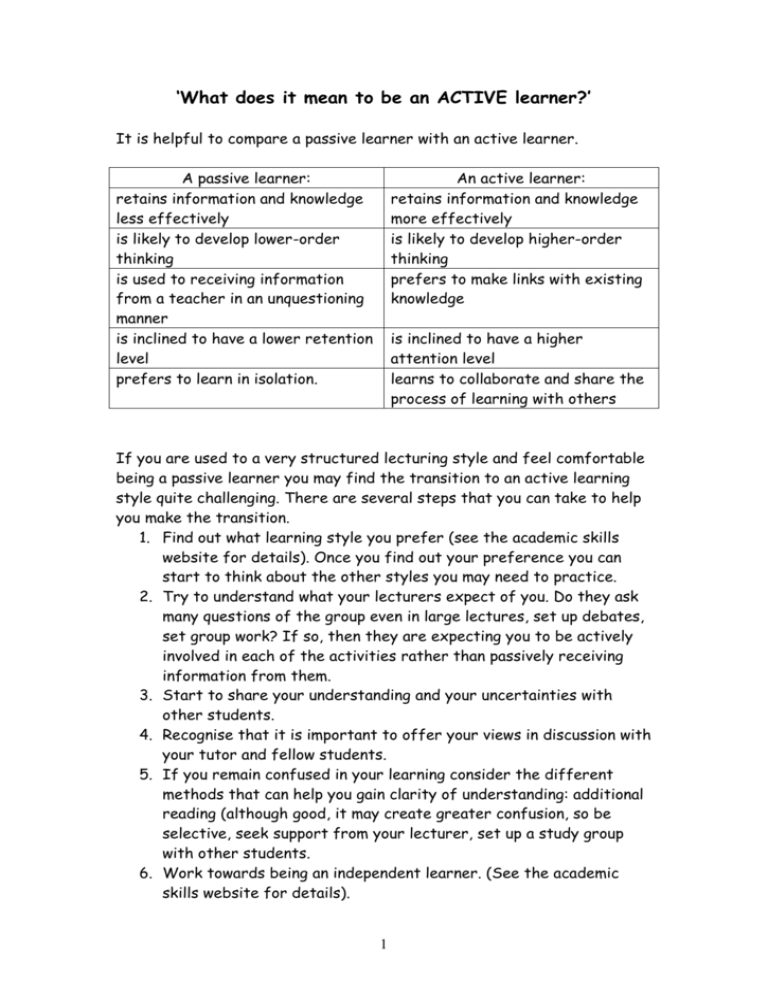`What does it mean to be an ACTIVE learner
advertisement

‘What does it mean to be an ACTIVE learner?’ It is helpful to compare a passive learner with an active learner. A passive learner: retains information and knowledge less effectively is likely to develop lower-order thinking is used to receiving information from a teacher in an unquestioning manner is inclined to have a lower retention level prefers to learn in isolation. An active learner: retains information and knowledge more effectively is likely to develop higher-order thinking prefers to make links with existing knowledge is inclined to have a higher attention level learns to collaborate and share the process of learning with others If you are used to a very structured lecturing style and feel comfortable being a passive learner you may find the transition to an active learning style quite challenging. There are several steps that you can take to help you make the transition. 1. Find out what learning style you prefer (see the academic skills website for details). Once you find out your preference you can start to think about the other styles you may need to practice. 2. Try to understand what your lecturers expect of you. Do they ask many questions of the group even in large lectures, set up debates, set group work? If so, then they are expecting you to be actively involved in each of the activities rather than passively receiving information from them. 3. Start to share your understanding and your uncertainties with other students. 4. Recognise that it is important to offer your views in discussion with your tutor and fellow students. 5. If you remain confused in your learning consider the different methods that can help you gain clarity of understanding: additional reading (although good, it may create greater confusion, so be selective, seek support from your lecturer, set up a study group with other students. 6. Work towards being an independent learner. (See the academic skills website for details). 1 In lectures there is a danger that you may be used to taking a passive approach. This is a comfortable way to behave but one that may not be in your best interests. When in lectures it is better to try to be an active learner through doing activities that helps you feel involved with the lecture. For example: prepare for your lectures, take time to listen carefully during lectures and classes to the key concepts or ideas being presented to you, make links with your previous learning and so on. Remember the old adage: What I hear, I forget. What I see, I remember What I do, I understand (active learning – learning through or by doing) 2









